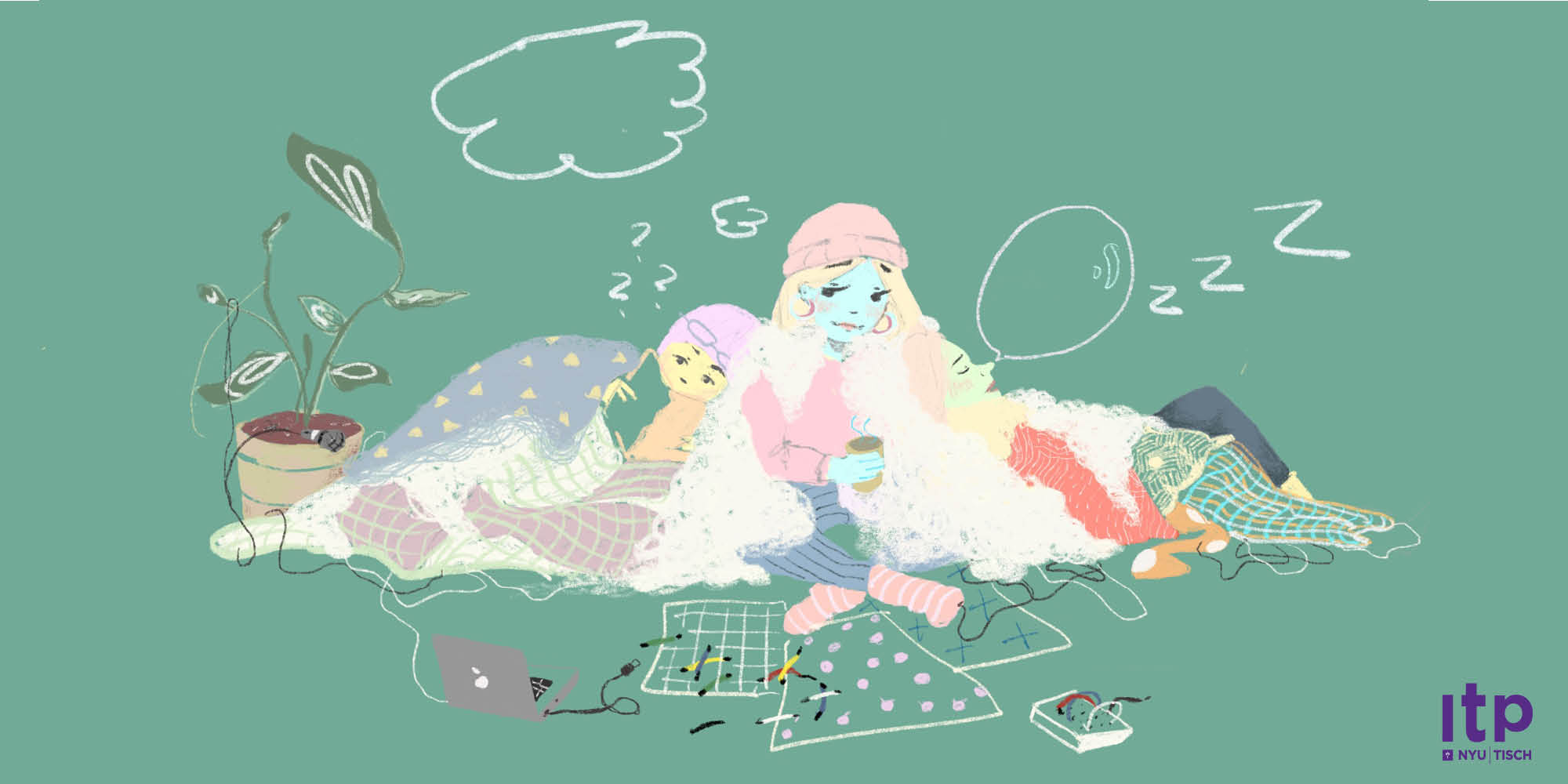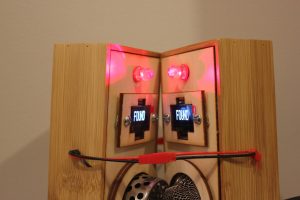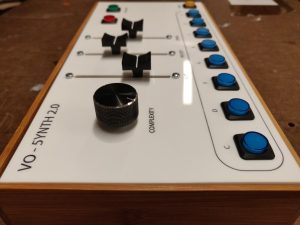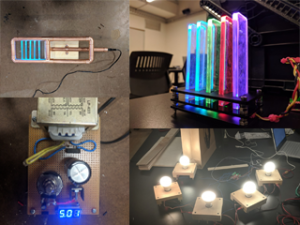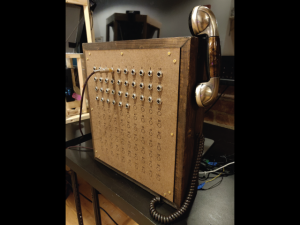Ashley Lewis
Like all of us at times, these bots are lost without one another, until you connect their hands and help them feel found
https://ashleyjanelewis.com/2018/10/05/lost-found-bots/
Description
This project was created in Fabrication at the beginning of the semester, just after I had moved from Canada to the US to attend ITP. Perhaps it was a manifestation of feeling out a new space, but these bots felt very therapeutic to design and make. Two comical 5″ bots, sit side by side, both similar but not congruent. Their tiny screens read as “lost” and their light are off. Connecting their hands, brings them closer together, as though they are hugging or kissing. Once connected, their screens read as “found” and their lights turn on.
The best part about this project was its ability to make others assess their feeling of lost or found. I posted it to Instagram and was able to instigate many conversations around empathy, in some cases, for my situation but, in most cases, around a situation of a stranger. A woman from Toronto whom I haven’t met showed the bots to her son immediately requested to build a pair of his own – a first for him in his exploration in electronic making. This little piece about lonely bots turned into a vessel for emotive conversations.
Classes
Intro to Fabrication, Introduction to Physical Computing
